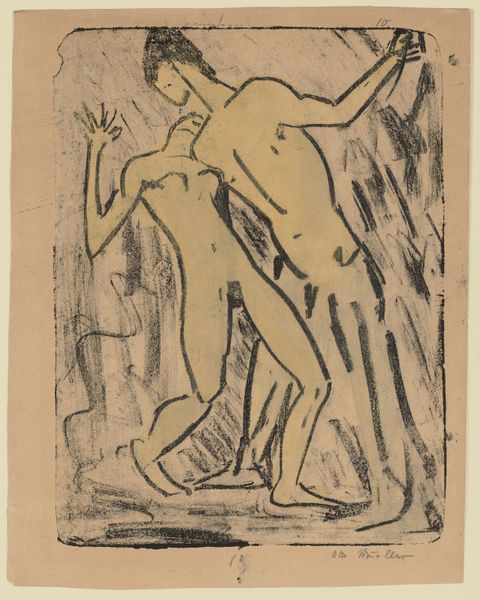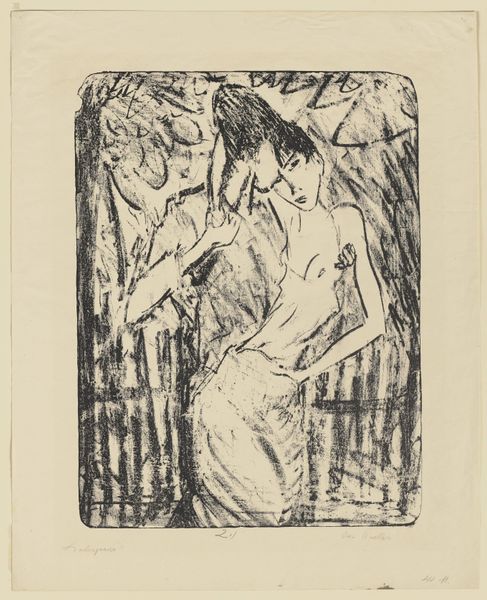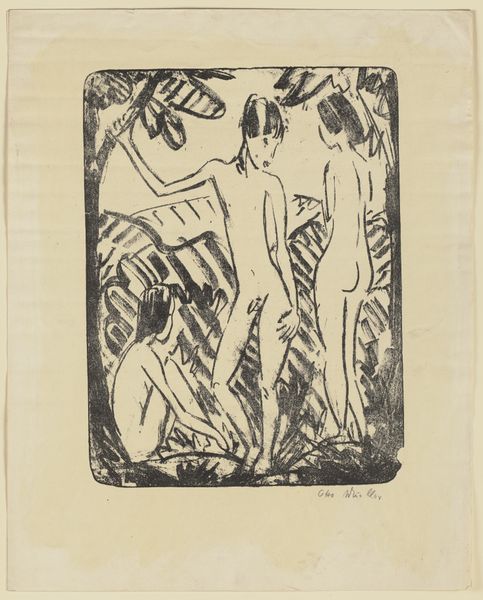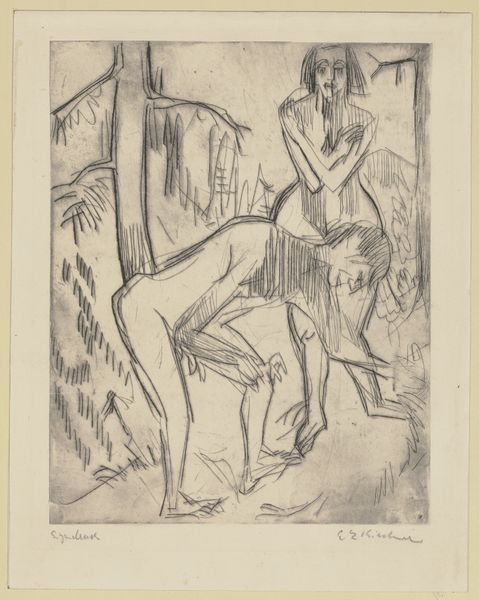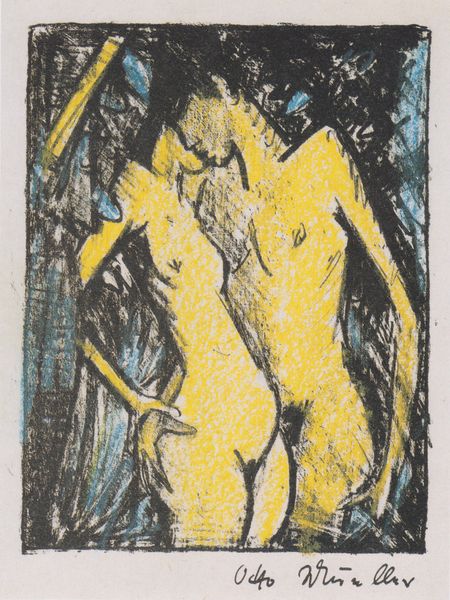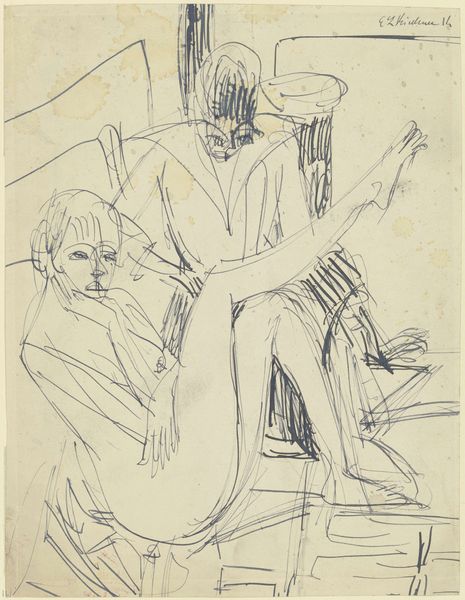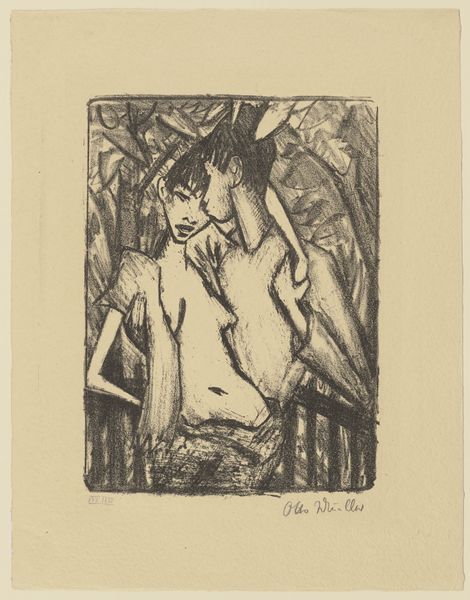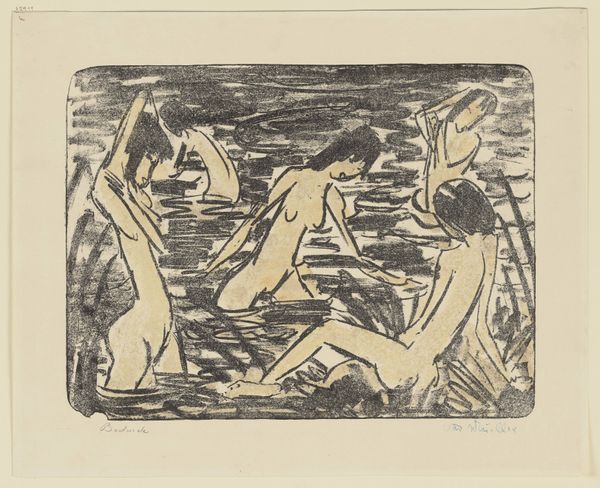
drawing, lithography, lithograph, print, paper
#
portrait
#
drawing
#
lithography
#
toned paper
#
lithograph
# print
#
figuration
#
paper
#
expressionism
#
nude
Copyright: Public Domain
Curator: Looking at this piece, I immediately feel drawn into a private, almost secretive moment. The way the figures are positioned, turned away and absorbed, suggests a world apart. Editor: We're observing Otto Mueller's "Zwei Mädchen mit Handspiegel I", or "Two Girls with Hand Mirror I," created around 1919. It's a lithograph on toned paper, a medium that seems perfectly suited to the intimacy you described. What really intrigues me is how he achieved such expressive qualities with lithography, a printmaking process usually associated with reproducibility. Curator: Exactly! It’s this intimacy within the public sphere that holds tension. The nude figures were considered controversial, breaking social taboos, and at the same time, widely printed as lithographs. How do you think the printing process might reflect this tension between the artwork as art and product? Editor: Considering the period after the First World War, materials were scarce, and printmaking provided artists a space to explore innovative modes for generating artworks. Looking at the print itself, I see the paper's texture interacting with the ink in very deliberate ways, it appears the way he pulled each print varied from copy to copy, making them uniquely expressive rather than purely replicative. Curator: Yes, it is interesting to think of Mueller as deliberately breaking from more academic artistic practice. And look at their gestures, so focused. What do you see? Editor: Well, one figure seems absorbed in applying makeup, or simply admiring herself in a hand mirror, while the other watches on. There’s something almost ritualistic about it, but grounded in the everyday. How does that relate to what you consider to be the public role of art in society at this moment? Curator: In a time of societal upheaval, Mueller uses familiar, sensual themes. This combination creates an accessible yet intimate portrayal of womanhood. The choice of figures that almost blend into the background reflects a sense of alienation prevalent in German Expressionism. Perhaps this reflects society grappling with change by simultaneously embracing and concealing elements of tradition and modernity. Editor: I see what you mean. Mueller clearly chose materials and processes that underscored the tensions of his time. It’s far more complex than just an image of two women; it’s about the labor of creation and its cultural resonance. Curator: Indeed. And how fascinating it is to consider how artistic intent interacts with social consciousness. It helps one understand how museums provide us with space to connect with ourselves and also see how history is just repeating itself, and reflect.
Comments
No comments
Be the first to comment and join the conversation on the ultimate creative platform.
